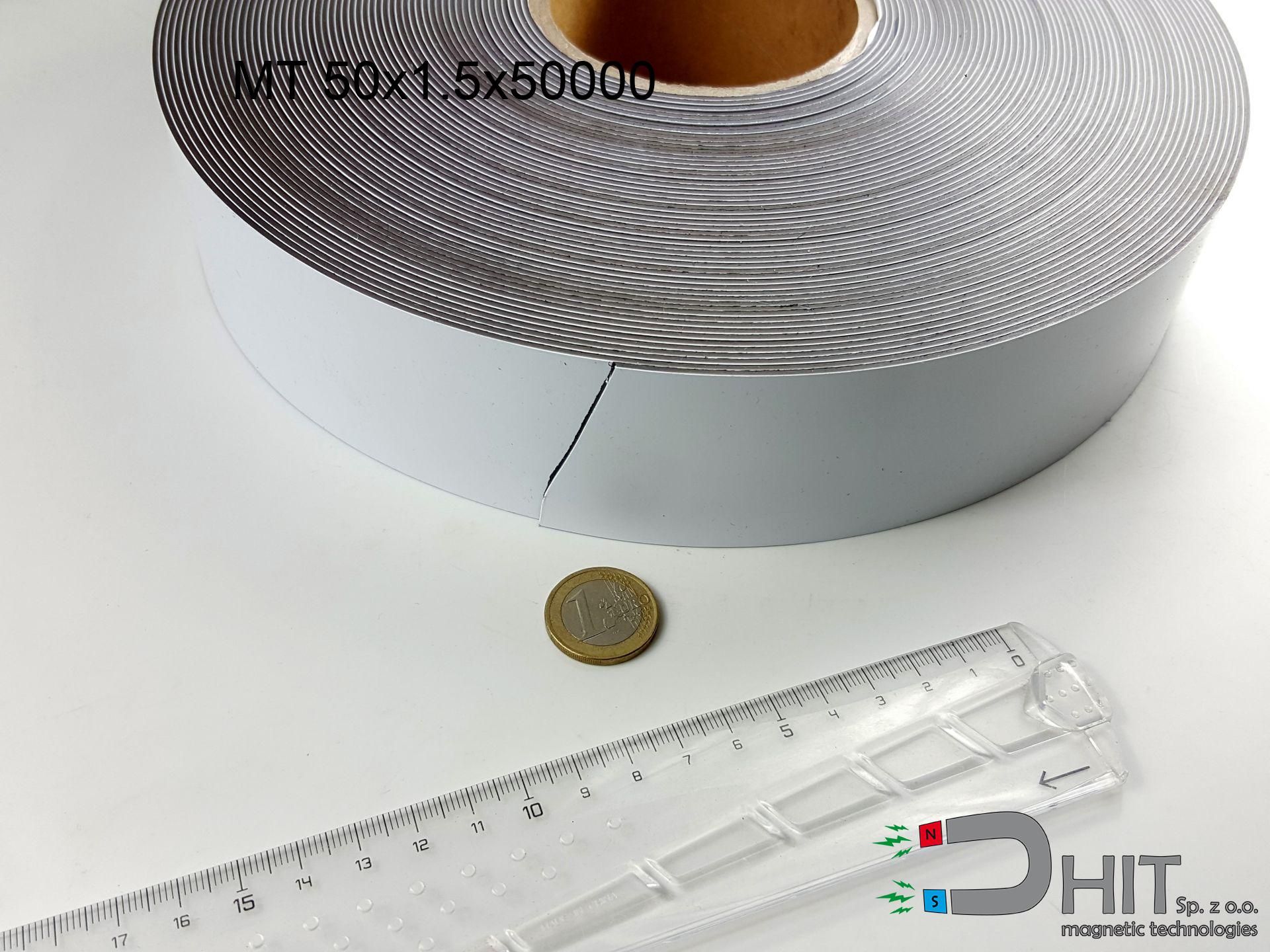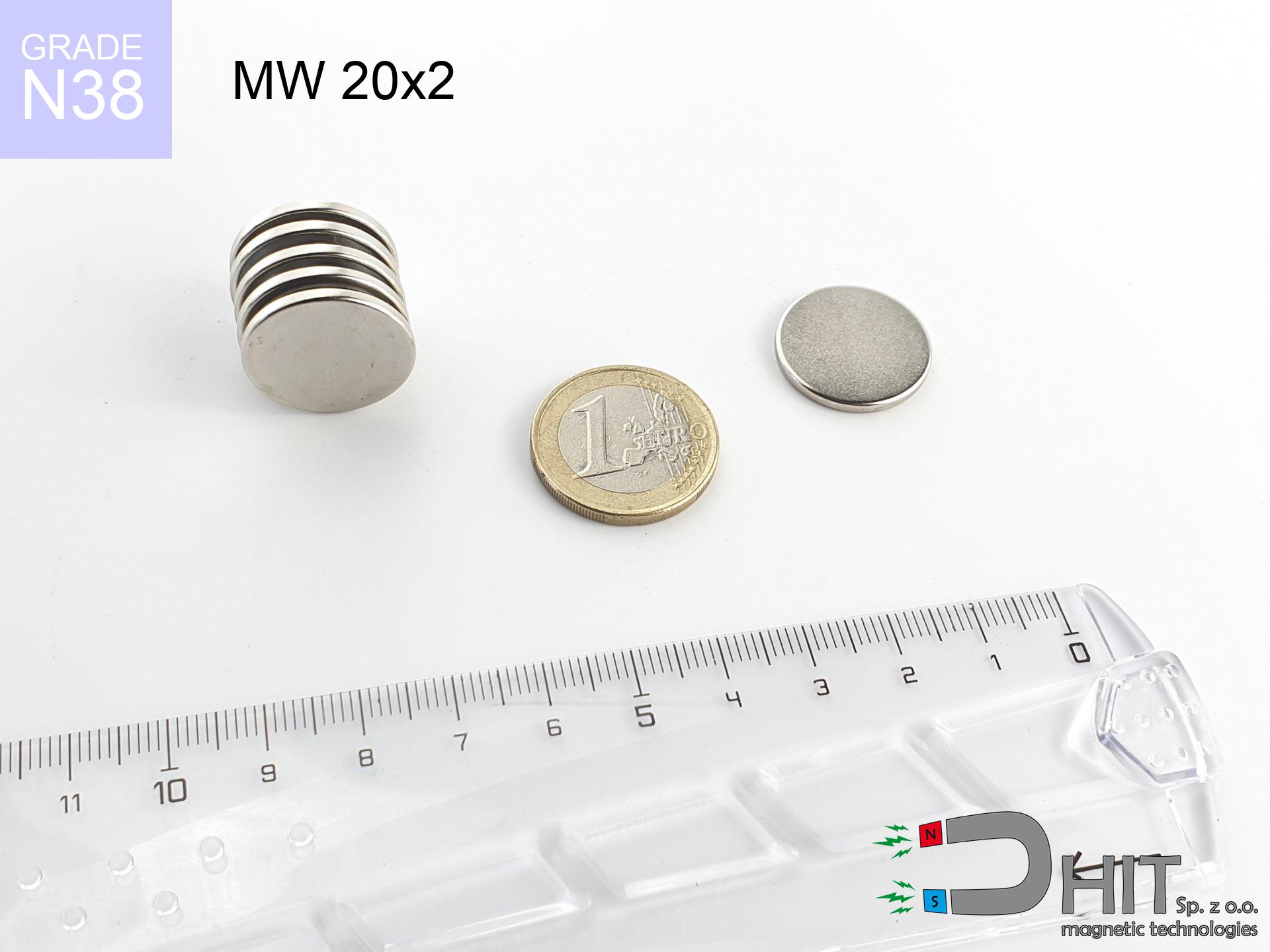SM 18x300 [2xM5] / N42 - magnetic separator
magnetic separator
Catalog no 130277
GTIN/EAN: 5906301812791
Diameter Ø
18 mm [±1 mm]
Height
300 mm [±1 mm]
Weight
0.01 g
Magnetic Flux
~ 5 400 Gauss [±5%]
664.20 ZŁ with VAT / pcs + price for transport
540.00 ZŁ net + 23% VAT / pcs
bulk discounts:
Need more?
Contact us by phone
+48 22 499 98 98
or drop us a message by means of
contact form
the contact form page.
Parameters along with appearance of magnets can be tested on our
power calculator.
Same-day processing for orders placed before 14:00.
Detailed specification - SM 18x300 [2xM5] / N42 - magnetic separator
Specification / characteristics - SM 18x300 [2xM5] / N42 - magnetic separator
| properties | values |
|---|---|
| Cat. no. | 130277 |
| GTIN/EAN | 5906301812791 |
| Production/Distribution | Dhit sp. z o.o. |
| Country of origin | Poland / China / Germany |
| Customs code | 85059029 |
| Diameter Ø | 18 mm [±1 mm] |
| Height | 300 mm [±1 mm] |
| Weight | 0.01 g |
| Material Type | Stainless steel AISI 304 / A2 |
| Magnetic Flux | ~ 5 400 Gauss [±5%] |
| Size/Mount Quantity | 2xM5 |
| Polarity | circumferential - 13 poles |
| Casing Tube Thickness | 1 mm |
| Manufacturing Tolerance | ±1 mm |
Magnetic properties of material N42
| properties | values | units |
|---|---|---|
| remenance Br [min. - max.] ? | 12.9-13.2 | kGs |
| remenance Br [min. - max.] ? | 1290-1320 | mT |
| coercivity bHc ? | 10.8-12.0 | kOe |
| coercivity bHc ? | 860-955 | kA/m |
| actual internal force iHc | ≥ 12 | kOe |
| actual internal force iHc | ≥ 955 | kA/m |
| energy density [min. - max.] ? | 40-42 | BH max MGOe |
| energy density [min. - max.] ? | 318-334 | BH max KJ/m |
| max. temperature ? | ≤ 80 | °C |
Physical properties of sintered neodymium magnets Nd2Fe14B at 20°C
| properties | values | units |
|---|---|---|
| Vickers hardness | ≥550 | Hv |
| Density | ≥7.4 | g/cm3 |
| Curie Temperature TC | 312 - 380 | °C |
| Curie Temperature TF | 593 - 716 | °F |
| Specific resistance | 150 | μΩ⋅cm |
| Bending strength | 250 | MPa |
| Compressive strength | 1000~1100 | MPa |
| Thermal expansion parallel (∥) to orientation (M) | (3-4) x 10-6 | °C-1 |
| Thermal expansion perpendicular (⊥) to orientation (M) | -(1-3) x 10-6 | °C-1 |
| Young's modulus | 1.7 x 104 | kg/mm² |
Table 1: Rod construction
SM 18x300 [2xM5] / N42
| Parameter | Value | Description / Unit |
|---|---|---|
| Diameter (Ø) | 18 | mm |
| Total length | 300 | mm (L) |
| Active length | 264 | mm |
| Section count | 11 | modules |
| Dead zone | 36 | mm (2x 18mm starter) |
| Weight (est.) | ~580 | g |
| Active area | 149 | cm² (Area) |
| Housing material | AISI 304 | 1.4301 (Inox) |
| Surface finish | Ra < 0.8 µm | Polished |
| Temp. class | 80°C | Standard (N) |
| Force loss (at max °C) | -12.8% | Reversible loss (physics) |
| Force (calculated) | 3.8 | kg (theor.) |
| Induction (surface) | ~5 400 | Gauss (Max) |
Chart 2: Field profile (11 sections)
Chart 3: Temperature performance
Material specification
| iron (Fe) | 64% – 68% |
| neodymium (Nd) | 29% – 32% |
| boron (B) | 1.1% – 1.2% |
| dysprosium (Dy) | 0.5% – 2.0% |
| coating (Ni-Cu-Ni) | < 0.05% |
Ecology and recycling (GPSR)
| recyclability (EoL) | 100% |
| recycled raw materials | ~10% (pre-cons) |
| carbon footprint | low / zredukowany |
| waste code (EWC) | 16 02 16 |
Other offers
Advantages and disadvantages of neodymium magnets.
Benefits
- Their magnetic field is durable, and after approximately 10 years it drops only by ~1% (theoretically),
- They are noted for resistance to demagnetization induced by external disturbances,
- The use of an elegant finish of noble metals (nickel, gold, silver) causes the element to be more visually attractive,
- Magnetic induction on the working part of the magnet remains exceptional,
- Through (adequate) combination of ingredients, they can achieve high thermal resistance, enabling operation at temperatures approaching 230°C and above...
- Possibility of individual creating as well as adapting to complex conditions,
- Universal use in future technologies – they are utilized in computer drives, electric drive systems, precision medical tools, also other advanced devices.
- Relatively small size with high pulling force – neodymium magnets offer high power in small dimensions, which enables their usage in small systems
Limitations
- To avoid cracks under impact, we recommend using special steel holders. Such a solution secures the magnet and simultaneously increases its durability.
- Neodymium magnets lose strength when exposed to high temperatures. After reaching 80°C, many of them experience permanent weakening of strength (a factor is the shape as well as dimensions of the magnet). We offer magnets specially adapted to work at temperatures up to 230°C marked [AH], which are very resistant to heat
- They rust in a humid environment. For use outdoors we recommend using waterproof magnets e.g. in rubber, plastic
- Limited possibility of making threads in the magnet and complex forms - preferred is cover - mounting mechanism.
- Possible danger resulting from small fragments of magnets can be dangerous, in case of ingestion, which becomes key in the context of child safety. Additionally, small components of these products can complicate diagnosis medical in case of swallowing.
- With budget limitations the cost of neodymium magnets is economically unviable,
Holding force characteristics
Maximum magnetic pulling force – what contributes to it?
- using a base made of mild steel, acting as a circuit closing element
- possessing a thickness of at least 10 mm to ensure full flux closure
- characterized by smoothness
- under conditions of ideal adhesion (surface-to-surface)
- during detachment in a direction perpendicular to the mounting surface
- at ambient temperature room level
Lifting capacity in real conditions – factors
- Distance – the presence of foreign body (rust, tape, gap) acts as an insulator, which lowers capacity rapidly (even by 50% at 0.5 mm).
- Force direction – catalog parameter refers to detachment vertically. When slipping, the magnet exhibits significantly lower power (typically approx. 20-30% of maximum force).
- Plate thickness – too thin sheet does not accept the full field, causing part of the flux to be escaped into the air.
- Steel grade – the best choice is pure iron steel. Cast iron may have worse magnetic properties.
- Smoothness – ideal contact is possible only on smooth steel. Any scratches and bumps create air cushions, reducing force.
- Thermal environment – heating the magnet results in weakening of force. Check the maximum operating temperature for a given model.
Lifting capacity testing was conducted on plates with a smooth surface of suitable thickness, under a perpendicular pulling force, in contrast under parallel forces the holding force is lower. Moreover, even a slight gap between the magnet’s surface and the plate lowers the lifting capacity.
Safe handling of neodymium magnets
Magnetic media
Do not bring magnets close to a wallet, computer, or screen. The magnetic field can permanently damage these devices and erase data from cards.
Material brittleness
Neodymium magnets are sintered ceramics, which means they are prone to chipping. Collision of two magnets will cause them cracking into small pieces.
Do not give to children
NdFeB magnets are not intended for children. Accidental ingestion of a few magnets may result in them attracting across intestines, which poses a severe health hazard and requires urgent medical intervention.
Nickel coating and allergies
A percentage of the population suffer from a sensitization to Ni, which is the typical protective layer for NdFeB magnets. Prolonged contact may cause an allergic reaction. It is best to wear safety gloves.
Operating temperature
Do not overheat. NdFeB magnets are susceptible to heat. If you need resistance above 80°C, ask us about special high-temperature series (H, SH, UH).
Medical interference
Warning for patients: Strong magnetic fields affect electronics. Maintain at least 30 cm distance or ask another person to work with the magnets.
Serious injuries
Danger of trauma: The pulling power is so great that it can result in hematomas, pinching, and broken bones. Use thick gloves.
Flammability
Powder produced during cutting of magnets is self-igniting. Do not drill into magnets without proper cooling and knowledge.
Handling guide
Exercise caution. Rare earth magnets act from a distance and connect with huge force, often quicker than you can move away.
Threat to navigation
An intense magnetic field disrupts the operation of magnetometers in smartphones and GPS navigation. Do not bring magnets close to a smartphone to avoid breaking the sensors.

![Separation magnetic rod SM 18x300 [2xM5] / N42 Separation magnetic rod SM 18x300 [2xM5] / N42](https://cdn3.dhit.pl/graphics/banners/magnet.webp)
![SM 18x300 [2xM5] / N42 - magnetic separator](https://cdn3.dhit.pl/graphics/products/sm-18x300-2xm5-xad.jpg)





